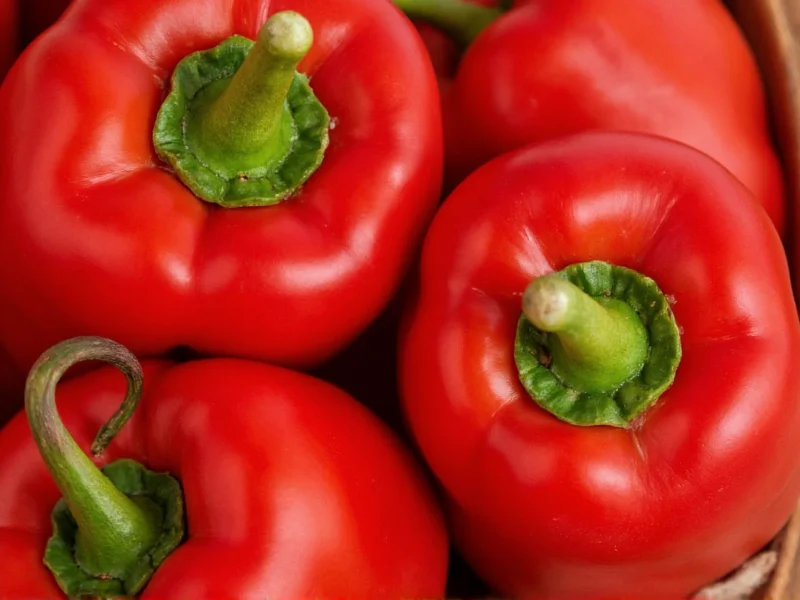Understanding exactly how many scoville units is a habanero requires examining both the scientific measurement and real-world variability. The Scoville scale, developed by pharmacist Wilbur Scoville in 1912, measures capsaicin concentration—the compound responsible for a pepper's heat. While laboratory testing using high-performance liquid chromatography now provides more precise measurements, the Scoville scale remains the standard reference for consumers.
What Determines Habanero Heat Levels?
Several factors influence the habanero pepper scoville scale measurement, creating natural variation even among peppers from the same plant:
- Growing conditions: Soil composition, climate, and water stress significantly impact capsaicin production
- Ripeness: Fully mature red or orange habaneros typically register higher on the scoville units for habanero scale than green, unripe versions
- Genetic variety: Different habanero cultivars exhibit distinct heat profiles
- Plant position: Peppers growing in direct sunlight often develop more capsaicin than shaded counterparts
Habanero Varieties and Their Scoville Ratings
Not all habaneros deliver identical heat. The average scoville units for habanero peppers varies across cultivars:
| Habanero Variety | Scoville Heat Units | Distinct Characteristics |
|---|---|---|
| Standard Orange Habanero | 350,000-580,000 SHU | Fruity flavor with floral notes, most common variety |
| Red Savina Habanero | 350,000-577,000 SHU | Former Guinness record holder for hottest pepper (1994-2006) |
| Chocolate Habanero | 425,000-450,000 SHU | Smoky, earthy flavor with deep brown coloration |
| White Habanero | 400,000-500,000 SHU | Rare variety with citrusy notes and pale color |
| Scottish Bonnet | 100,000-350,000 SHU | Often confused with habaneros but generally milder |
How Habaneros Compare to Other Popular Peppers
Understanding how hot is a habanero compared to other peppers provides valuable context for heat tolerance. The habanero's position on the Scoville scale makes it dramatically hotter than common grocery store peppers but milder than the current superhot champions:
- Jalapeño (2,500-8,000 SHU): A habanero is approximately 44-232 times hotter
- Serrano (10,000-23,000 SHU): Habaneros are 15-58 times hotter
- Cayenne (30,000-50,000 SHU): Habaneros deliver 7-19 times more heat
- Thai Bird's Eye (50,000-100,000 SHU): Habaneros are 3.5-11.6 times hotter
- Ghost Pepper (855,000-1,041,427 SHU): Ghost peppers are 1.5-3 times hotter than habaneros
- Carolina Reaper (1,400,000-2,200,000 SHU): Approximately 2.4-6.3 times hotter than habaneros
Practical Implications of Habanero Heat
The substantial habanero scoville units range has real consequences for culinary use. Chefs and home cooks should understand that:
Even a small amount of habanero can dramatically alter a dish's heat profile. When working with these peppers, always wear gloves to prevent capsaicin transfer to sensitive areas. The heat compounds concentrate in the pepper's placenta (the white ribs inside) rather than the seeds themselves, though seeds often absorb capsaicin from adjacent tissues.
For those wondering how many scoville units is a habanero in practical terms, consider that consuming a full habanero could trigger significant physiological responses including sweating, increased heart rate, and endorphin release—effects that typically subside within 20-45 minutes as capsaicin metabolizes.
Safety Considerations with High-Heat Peppers
While the red habanero scoville heat level falls below today's superhot peppers, it still demands respect. Capsaicin's effects aren't limited to the mouth—contact with eyes or broken skin can cause severe irritation. Always wash hands thoroughly with soap after handling habaneros, and avoid touching your face.
Milk, yogurt, or other dairy products provide the most effective relief from habanero heat, as casein proteins bind to capsaicin molecules. Water merely spreads the oil, potentially worsening the burning sensation. For severe reactions, consult a medical professional—particularly important for individuals with gastrointestinal sensitivities.
Measuring Pepper Heat Accurately
Modern laboratories have largely replaced the original Scoville Organoleptic Test (which relied on human tasters diluting pepper extract until heat became undetectable) with high-performance liquid chromatography (HPLC). This scientific method precisely measures capsaicinoid concentration, then converts to Scoville units using a standardized formula.
This explains why the habanero vs ghost pepper scoville comparison shows such dramatic differences—the analytical precision reveals heat levels that human testers might struggle to distinguish reliably. Despite technological advances, the Scoville scale remains the consumer-friendly reference for understanding pepper heat.
What is the average scoville unit measurement for a standard habanero pepper?
The average scoville unit measurement for a standard orange habanero pepper falls between 350,000 and 580,000 SHU. Most commercially available habaneros register around 400,000-500,000 SHU, though specific heat levels vary based on growing conditions, ripeness, and genetic variety.
How does the heat of a habanero compare to a jalapeño on the scoville scale?
A habanero is significantly hotter than a jalapeño, typically measuring 44-232 times the heat. While jalapeños range from 2,500-8,000 Scoville Heat Units, habaneros register between 350,000-580,000 SHU. This means even a small amount of habanero can deliver more heat than an entire jalapeño pepper.
Why do habanero peppers have such a wide scoville unit range?
Habanero peppers exhibit a wide scoville unit range (350,000-580,000 SHU) due to multiple factors including growing conditions (soil, climate, water stress), ripeness level, specific cultivar, and even the individual plant's position in the garden. Environmental stressors often increase capsaicin production as a natural defense mechanism, causing significant variation even among peppers from the same plant.
Can cooking reduce the scoville heat units of habanero peppers?
Cooking does not significantly reduce the scoville heat units of habanero peppers, as capsaicin (the compound responsible for heat) is heat-stable. While prolonged cooking may distribute the heat more evenly throughout a dish, the total capsaicin content remains largely unchanged. The perception of heat might decrease slightly as capsaicin binds with fats and oils, but the actual scoville measurement remains consistent.
Which habanero variety has the highest scoville unit rating?
Among common habanero varieties, the Chocolate Habanero typically registers at the higher end of the spectrum with 425,000-450,000 SHU. However, the Red Savina Habanero held the Guinness World Record for hottest pepper from 1994 to 2006 with verified measurements up to 577,000 SHU. It's important to note that individual peppers within any variety can occasionally exceed typical ranges based on growing conditions.











 浙公网安备
33010002000092号
浙公网安备
33010002000092号 浙B2-20120091-4
浙B2-20120091-4